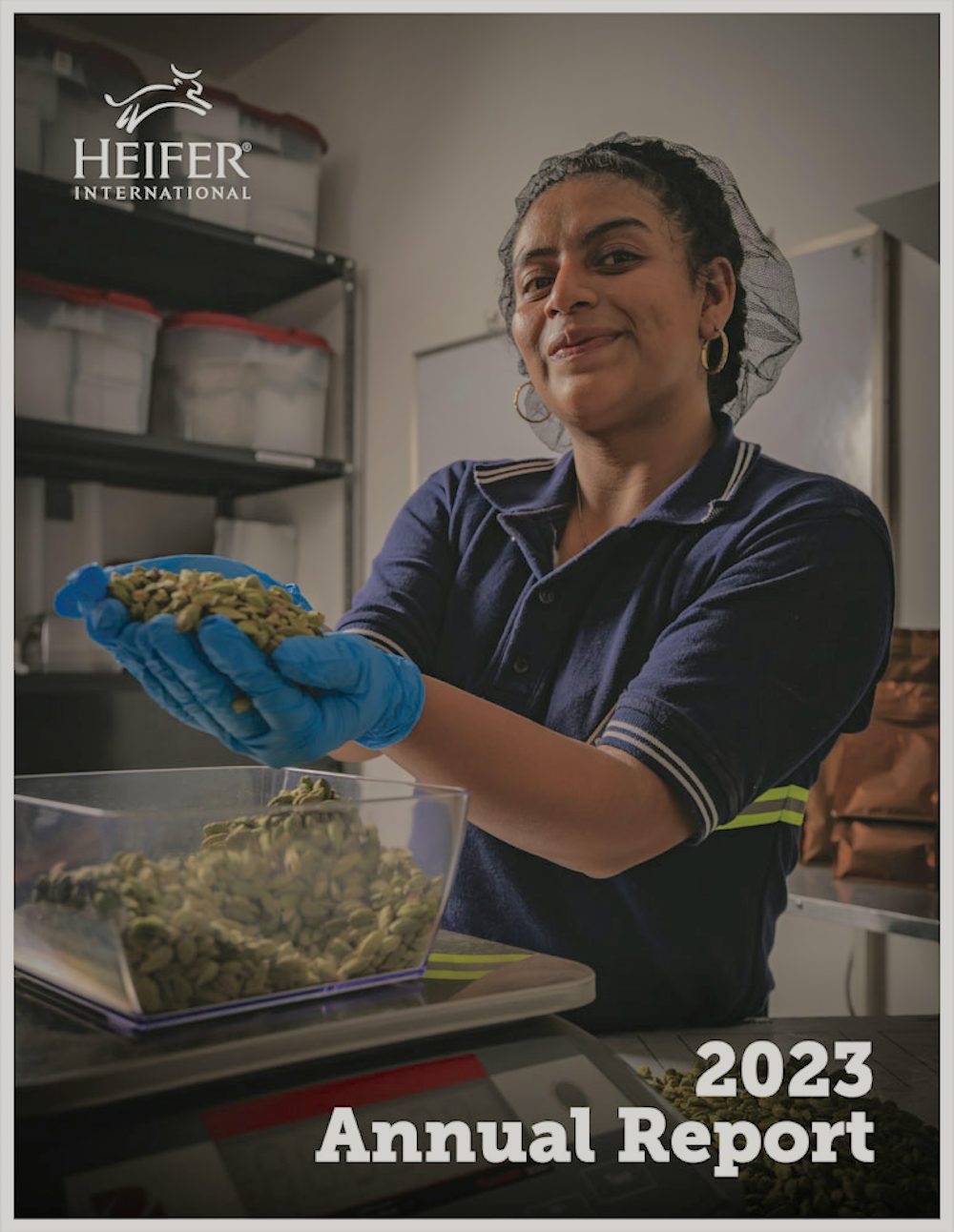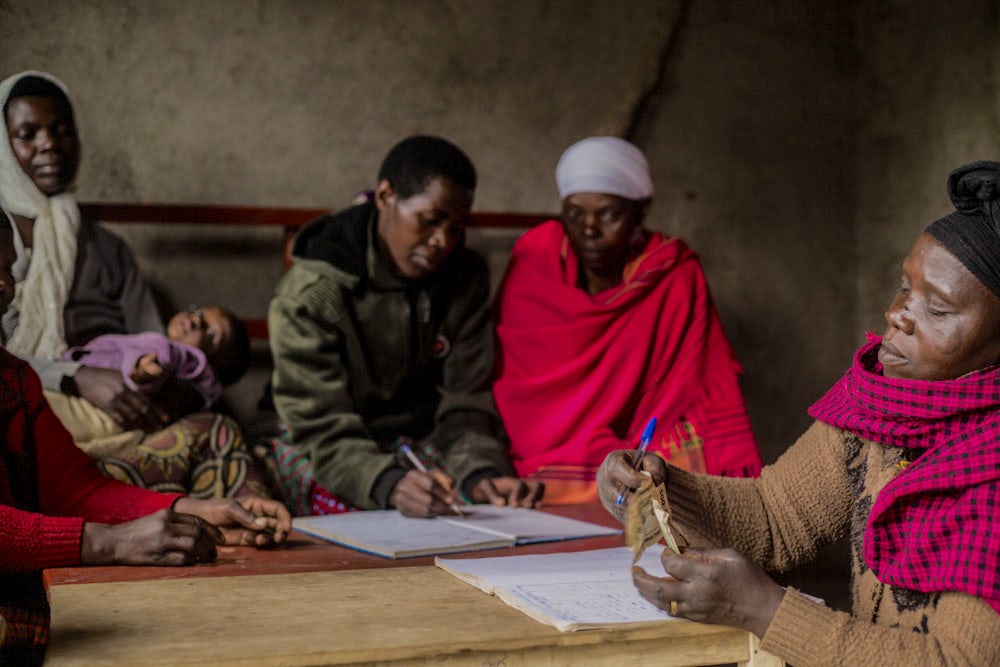In 2023, Heifer International supported more than 798,000 smallholder farming households across 19 countries to develop their own pathways toward more resilient and productive agricultural systems and market solutions, catalyzing sustainable livelihood opportunities for them.
Our locally led work was achieved by forging strong partnerships in multiple sectors, and by harnessing the insight, creativity and unique understanding of the communities we serve.
Read highlights from our global efforts below or view our full 2023 annual report now.

Heifer’s approach is strongly focused on women smallholder farmers. Through analysis of our work over the years, we have learned that empowering women is key to strengthening resilience to shocks, ensuring sustainable development and supporting families and communities to meet their goals and create opportunities for economic growth.
In FY23, Heifer programs made significant progress in advancing women’s empowerment, with nearly 60 percent of leadership positions in Heifer-supported cooperatives reported to be occupied by women in projects that provided data in FY23.
Across the world, smallholder farmers face considerable challenges accessing profitable markets.
Often, farmers in one area grow similar crops or keep the same livestock, resulting in oversupply of local markets with the same or similar produce. In other cases, poor road infrastructure and high transport costs mean only a few farmers can access markets that may offer better prices. Smallholders also have trouble obtaining financing due to insufficient collateral and other impediments.
Across our portfolio, we’ve found opportunities to support farmers in finding or even creating better markets to ensure they earn a fair price when it’s time to sell.

Access to credit remains one of the biggest challenges for smallholder farmers, especially women farmers, due to lack of collateral for loans, gender bias, perceived risk of investing in agriculture and other barriers.
Working with Heifer has enabled farmers to access loans at affordable rates, insure their farms against disasters, buy equipment to scale their businesses and purchase feed and other necessities.
Although agriculture is how we feed the world’s growing population, it also has significant environmental impacts. While people in low-income and middle-income countries — especially the hundreds of millions of smallholder farmers in these countries — have contributed the least to climate change, they are highly vulnerable to its impacts.
In FY23, we deployed strategies to help farmers contribute to stronger, more profitable food systems while reducing agriculture's impact on the environment and restoring degraded land.
View the full 2023 annual report to learn more about our achievements and future goals.